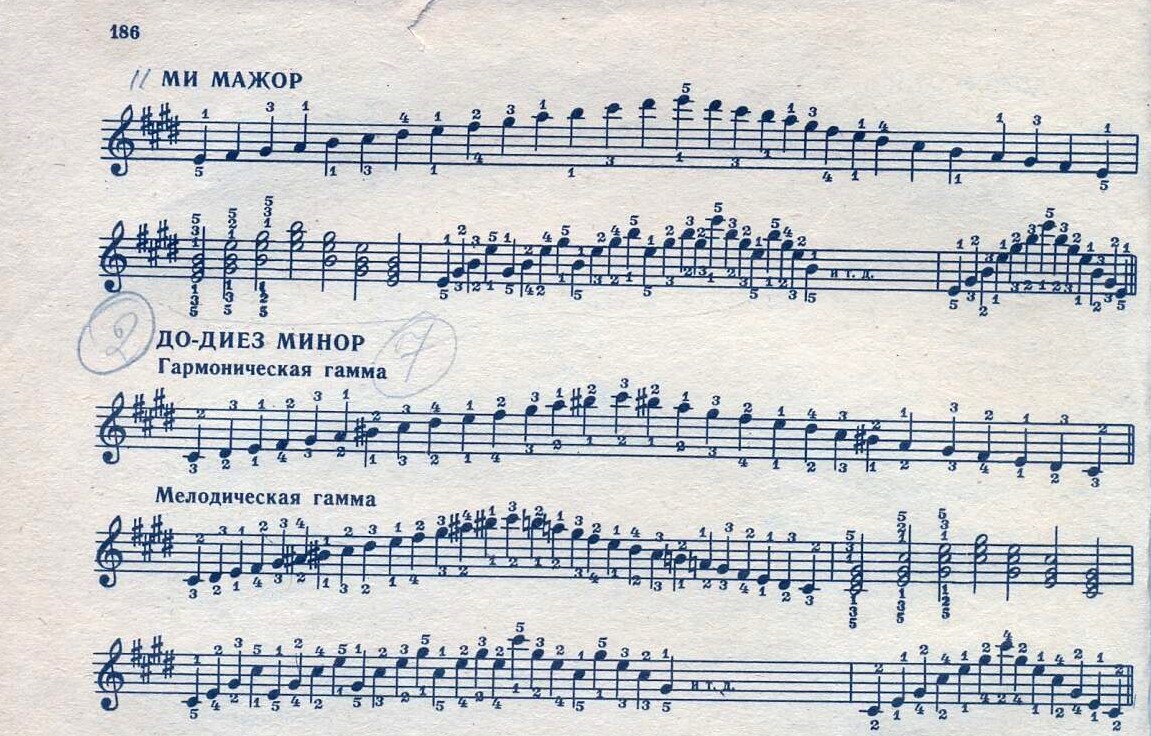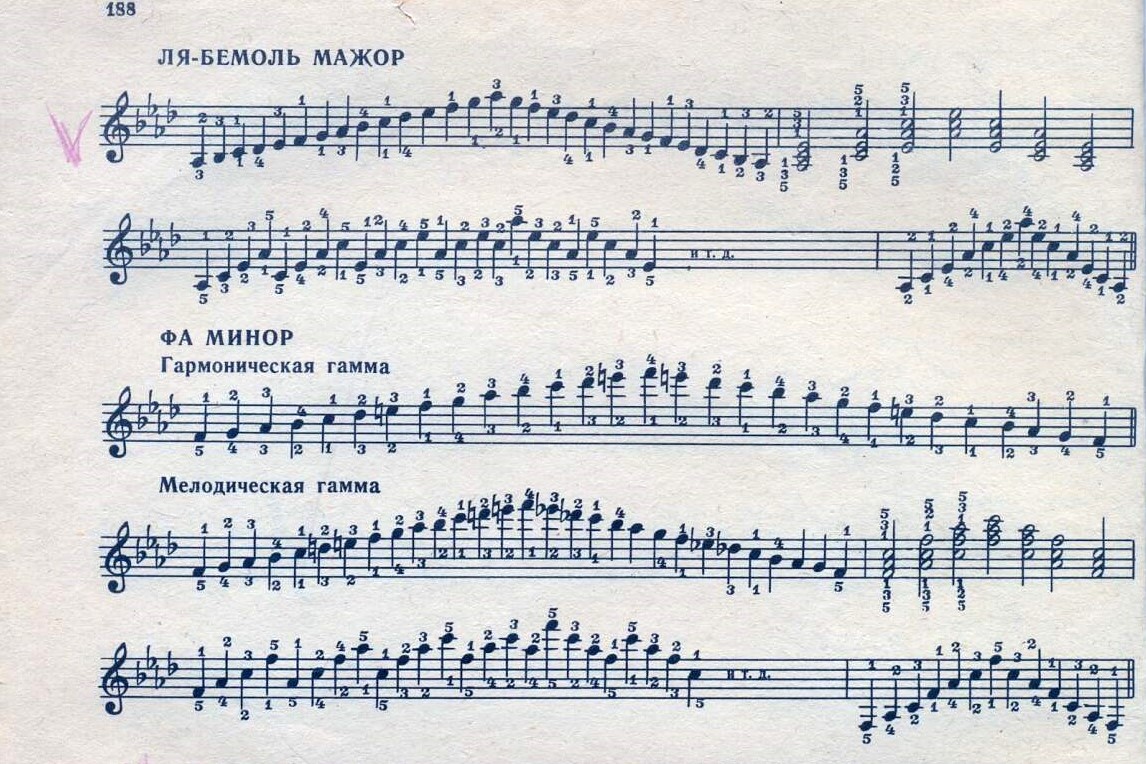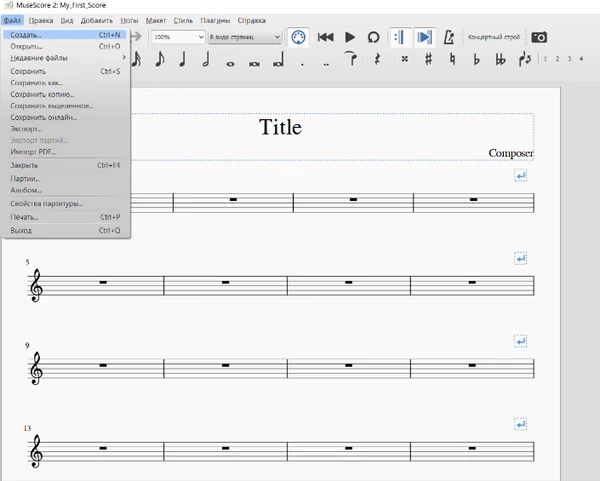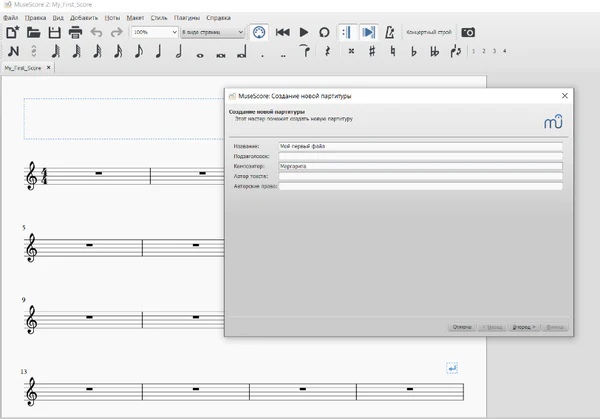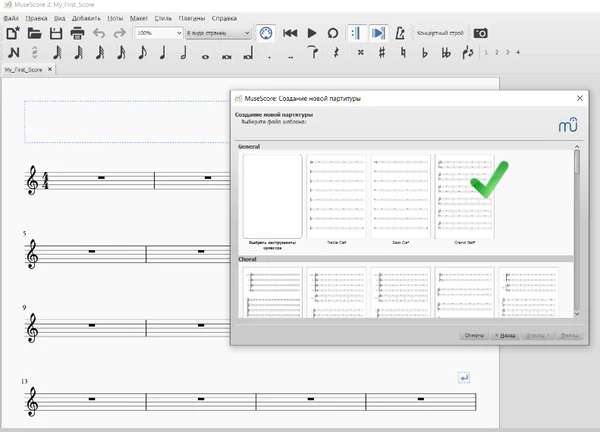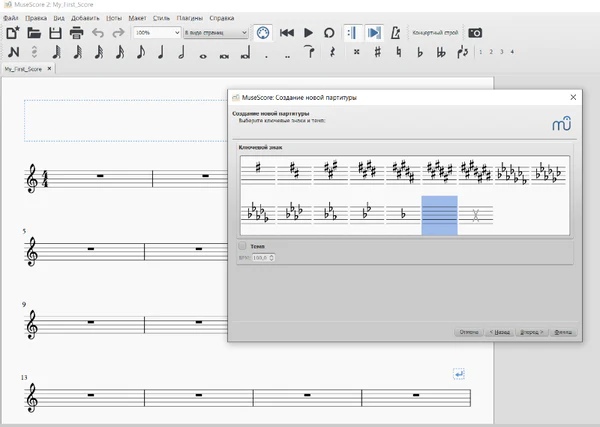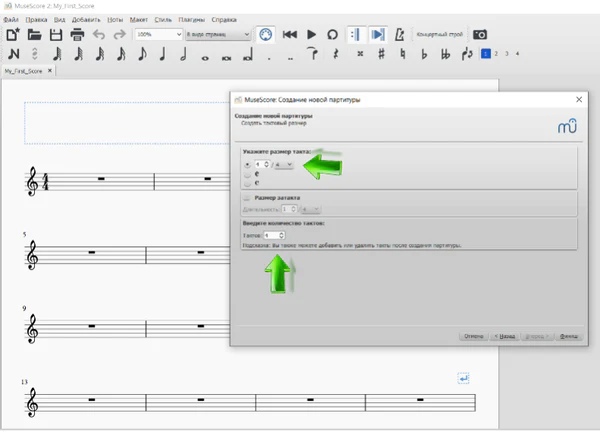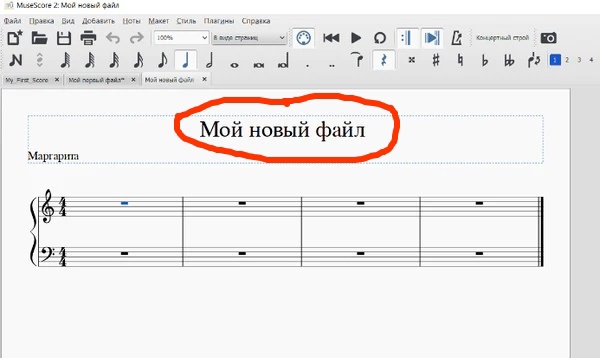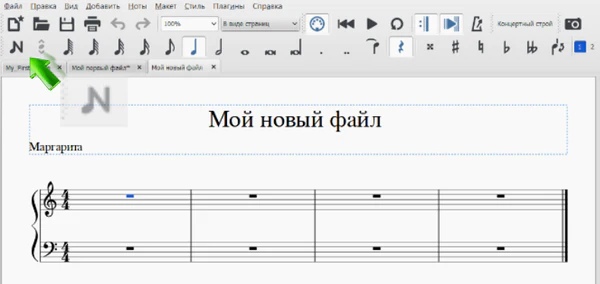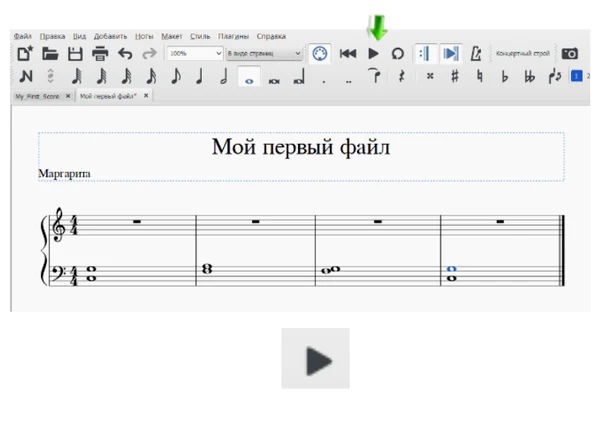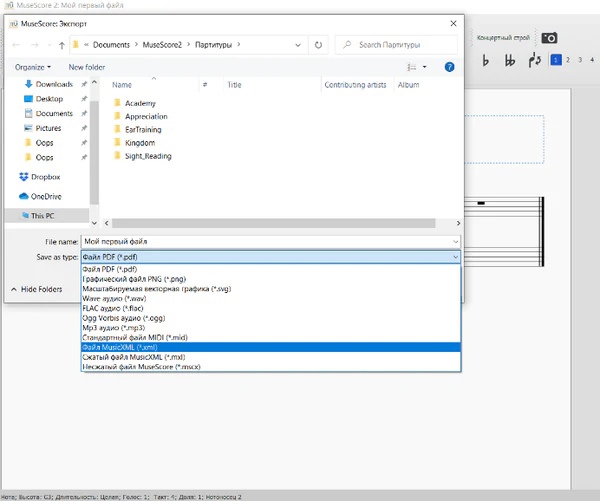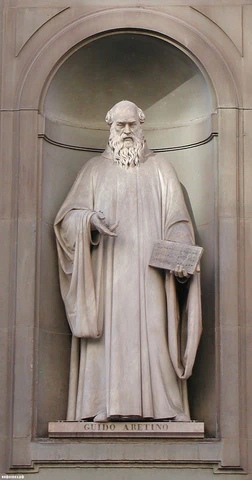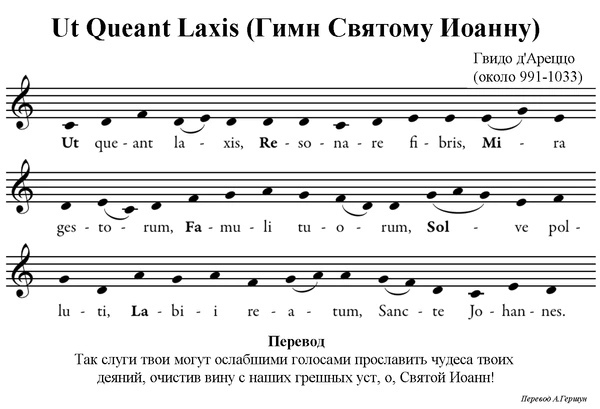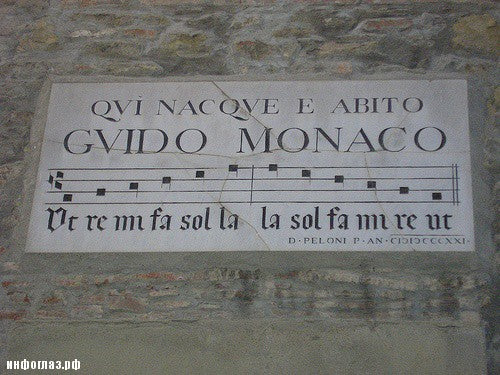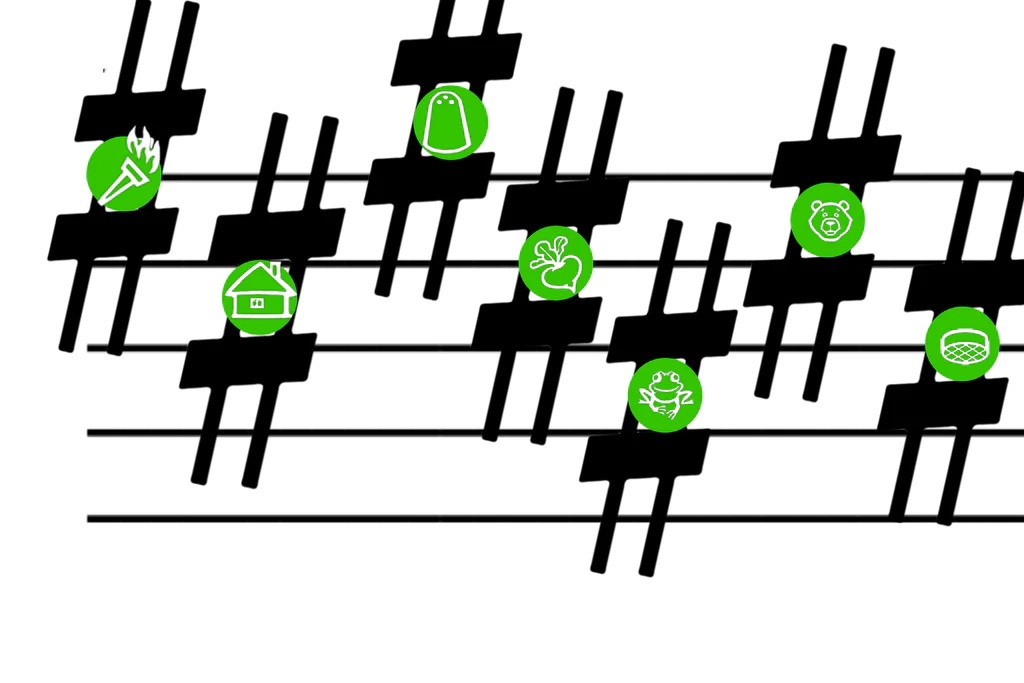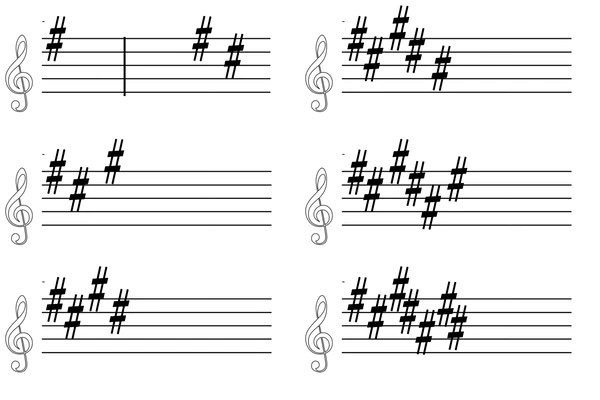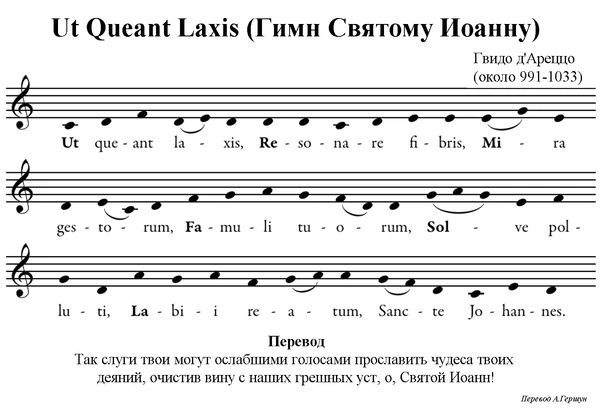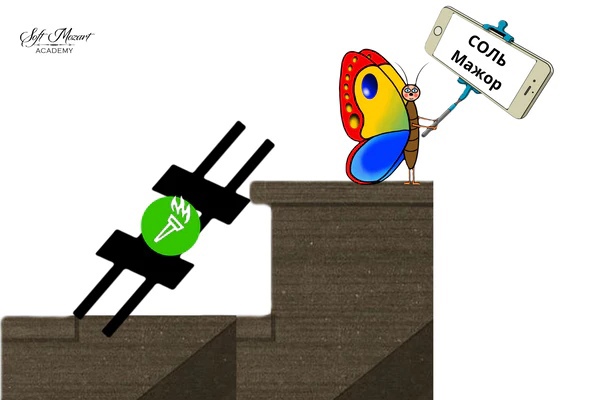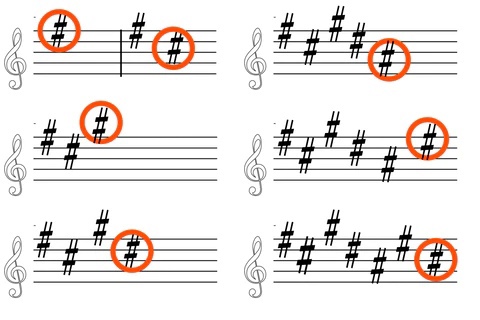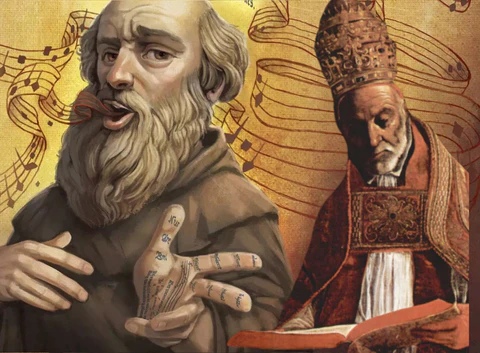- Posts: 5006
- Karma: 50
- Thank you received: 2054
Our Promotion
The countdown has ended
Save, Сэкономьте, Ahorrar
×
The 'Butterfly Ball' is Officially Over. What Next?/ "Бал Бабочек" закончен. Что дальше?/La Gala de Mariposas ha terminado oficialmente. ¿Qué sigue? (12 Feb 2024)
Unlock Your 'Butterfly Ball' Benefits: Certificates and Discounts Awaiting!
Откройте для себя преимущества «Бала Бабочек»: начинаем производить сертификаты и назначать скидки!
¡Desbloquea tus beneficios de la Gala de Mariposas: Certificados y descuentos te esperan!
Level 4
22 Jun 2023 03:35 - 26 Oct 2023 02:17 #47713
by Аким
DEVELOPMENT OF FINGER TECHNIQUE
Exercises:
Ganon #1, 2, 3, 4, 5, 6, 7, 8, 9, 10 with a minus.
Playlist: www.youtube.com/playlist?list=PLL_idaBUn...xzhfe_XEnd36Mw_TjJGW
!!! at level 4, you will need to pass sharp and flat scales with 4 signs at the key + triads and inversions, arpeggios and long arpeggios:
1. E major
2. C-sharp minor
3. A flat major
4. F minor
SEE READING:
R2, R4, R5, R6
L2, L4, L5, L6
P2, P4, P5 and P6
Gentle Piano albums:
- Musical Pictures Level 3.0
- Musical Pieces Level 3.1
- Pieces and Etudes 1 Level 3.2
- Classical Dances Level 3.3
- Simona's Repertoire 4 Level 3.4
Study for the eyes
R2, R4, R5, R6
L2, L4, L5, L6
P2, P4, P5 and P6
Rulers: 5, 6, 7.
Spaces: 3, 4, 5.
EAR TRAINING
Solfeggio and Chords
1. Gentle Piano - альбом Solfeggio and Chords 2 Major D, Bb, A, Eb .
Songs: Savka, Kitti, My Ram, Two Happy Geese, Baby Hare
Play
1. S, R, RH,
2. With no computer
3. Write the music notes down,
4. Place dots under longer notes
5. Connect shorter notes and
6. Check the rhythm on 6th presentation.
Write the songs in D, Bb, A, Eb Major.
1.1 Gentle Piano - Solfeggio and Chords 2 Major D, Bb, A, Eb .
Songs: Savka, Kitti, My Ram, Two Happy Geese, Baby Hare
Play first piece on S and L
Play the rest of the pieces on S and L(H)
2. Gentle Piano - альбом Solfeggio and Chords 2 Major D, Bb, A, Eb .
Songs: Suliko, A Song, Behind the Passing, In the Forge, Beyond the Grove, Mary’s Gone, Sun is Low, Donkey
Play
1. S, R, RH,
2. With no computer
3. Write the music notes down,
4. Place dots under longer notes
5. Connect shorter notes and
6. Check the rhythm on 6th presentation.
Write the songs in D, Bb, A, Eb Major.
2.1 Gentle Piano - Solfeggio and Chords 2 Major D, Bb, A, Eb .
Songs: Suliko, A Song, Behind the Passing, In the Forge, Beyond the Grove, Mary’s Gone, Sun is Low, Donkey
Play first piece on S and L
Play the rest of the pieces on S and L(H)
3. Gentle Piano - Solfeggio and Chords 2 Minor H, G, F#, C.
Songs: Kerchief, A Song, Headache, My Cow, Nightingale, Separation
Play
1. S, R, RH,
2. With no computer
3. Write the music notes down,
4. Place dots under longer notes
5. Connect shorter notes and
6. Check the rhythm on 6th presentation.
Write the songs in D, Bb, A, Eb Major.
3.1 Gentle Piano - Solfeggio and Chords 2 Minor H, G, F#, C.
Songs: Kerchief, A Song, Headache, My Cow, Nightingale, Separation
Play first piece on S and L
Play the rest of the pieces on S and L(H)
4. Gentle Piano альбомы Solfeggio and Chords 2 Minor H, G, F#, C.
Songs: Girl from Podol, Oh Mother, Roaring, Don’t tempt, Swan Lake theme
Play
1. S, R, RH,
2. With no computer
3. Write the music notes down,
4. Place dots under longer notes
5. Connect shorter notes and
6. Check the rhythm on 6th presentation.
Write the songs in D, Bb, A, Eb Major.
4.1 Gentle Piano - найдите альбом Solfeggio and Chords 2 Minor H, G, F#, C.
Songs: Girl from Podol, Oh Mother, Roaring, Don’t tempt, Swan Lake theme
Play first piece on S and L
Play the rest of the pieces on S and L(H)
Harmony and solfeggio from level 3 (from 1-18 lesson)
Exercises:
Ganon #1, 2, 3, 4, 5, 6, 7, 8, 9, 10 with a minus.
Playlist: www.youtube.com/playlist?list=PLL_idaBUn...xzhfe_XEnd36Mw_TjJGW
!!! at level 4, you will need to pass sharp and flat scales with 4 signs at the key + triads and inversions, arpeggios and long arpeggios:
1. E major
2. C-sharp minor
3. A flat major
4. F minor
SEE READING:
R2, R4, R5, R6
L2, L4, L5, L6
P2, P4, P5 and P6
Gentle Piano albums:
- Musical Pictures Level 3.0
- Musical Pieces Level 3.1
- Pieces and Etudes 1 Level 3.2
- Classical Dances Level 3.3
- Simona's Repertoire 4 Level 3.4
Study for the eyes
R2, R4, R5, R6
L2, L4, L5, L6
P2, P4, P5 and P6
Rulers: 5, 6, 7.
Spaces: 3, 4, 5.
EAR TRAINING
Solfeggio and Chords
1. Gentle Piano - альбом Solfeggio and Chords 2 Major D, Bb, A, Eb .
Songs: Savka, Kitti, My Ram, Two Happy Geese, Baby Hare
Play
1. S, R, RH,
2. With no computer
3. Write the music notes down,
4. Place dots under longer notes
5. Connect shorter notes and
6. Check the rhythm on 6th presentation.
Write the songs in D, Bb, A, Eb Major.
1.1 Gentle Piano - Solfeggio and Chords 2 Major D, Bb, A, Eb .
Songs: Savka, Kitti, My Ram, Two Happy Geese, Baby Hare
Play first piece on S and L
Play the rest of the pieces on S and L(H)
2. Gentle Piano - альбом Solfeggio and Chords 2 Major D, Bb, A, Eb .
Songs: Suliko, A Song, Behind the Passing, In the Forge, Beyond the Grove, Mary’s Gone, Sun is Low, Donkey
Play
1. S, R, RH,
2. With no computer
3. Write the music notes down,
4. Place dots under longer notes
5. Connect shorter notes and
6. Check the rhythm on 6th presentation.
Write the songs in D, Bb, A, Eb Major.
2.1 Gentle Piano - Solfeggio and Chords 2 Major D, Bb, A, Eb .
Songs: Suliko, A Song, Behind the Passing, In the Forge, Beyond the Grove, Mary’s Gone, Sun is Low, Donkey
Play first piece on S and L
Play the rest of the pieces on S and L(H)
3. Gentle Piano - Solfeggio and Chords 2 Minor H, G, F#, C.
Songs: Kerchief, A Song, Headache, My Cow, Nightingale, Separation
Play
1. S, R, RH,
2. With no computer
3. Write the music notes down,
4. Place dots under longer notes
5. Connect shorter notes and
6. Check the rhythm on 6th presentation.
Write the songs in D, Bb, A, Eb Major.
3.1 Gentle Piano - Solfeggio and Chords 2 Minor H, G, F#, C.
Songs: Kerchief, A Song, Headache, My Cow, Nightingale, Separation
Play first piece on S and L
Play the rest of the pieces on S and L(H)
4. Gentle Piano альбомы Solfeggio and Chords 2 Minor H, G, F#, C.
Songs: Girl from Podol, Oh Mother, Roaring, Don’t tempt, Swan Lake theme
Play
1. S, R, RH,
2. With no computer
3. Write the music notes down,
4. Place dots under longer notes
5. Connect shorter notes and
6. Check the rhythm on 6th presentation.
Write the songs in D, Bb, A, Eb Major.
4.1 Gentle Piano - найдите альбом Solfeggio and Chords 2 Minor H, G, F#, C.
Songs: Girl from Podol, Oh Mother, Roaring, Don’t tempt, Swan Lake theme
Play first piece on S and L
Play the rest of the pieces on S and L(H)
Harmony and solfeggio from level 3 (from 1-18 lesson)
Attachments:
Last edit: 26 Oct 2023 02:17 by Аким.
Please Log in or Create an account to join the conversation.
23 Oct 2023 01:57 #49875
by Аким
Hearing development and musical dictation
Learning to work with digital notation:
1. Download and install the Musescore program
2. Open Musescore. Do not update the program!
Your first file:
I. Create a title:
- Open the Musescore program - File - Create
- Enter the name of the “play” and the author into the windows
Press REDRED
II. We prepare a place for recording the musical text:
1. Select the Grand Staff by clicking on the image:
2. Select the key: no signs. And press forward:
3. Select the time signature (4/4) and the number of measures (4), and then the finish button
You will see a page ready for entering text:
II.
Your first sheet music.
1. To start working with notes, first click the icon as shown in the picture:
2. After clicking on the duration icons, place notes in the bass clef field. This is a full T-S-D-T cadence. Listen to what happened:
3. Save the file for later work as MusicXML:
Learning to work with digital notation:
1. Download and install the Musescore program
2. Open Musescore. Do not update the program!
Your first file:
I. Create a title:
- Open the Musescore program - File - Create
- Enter the name of the “play” and the author into the windows
Press REDRED
II. We prepare a place for recording the musical text:
1. Select the Grand Staff by clicking on the image:
2. Select the key: no signs. And press forward:
3. Select the time signature (4/4) and the number of measures (4), and then the finish button
You will see a page ready for entering text:
II.
Your first sheet music.
1. To start working with notes, first click the icon as shown in the picture:
2. After clicking on the duration icons, place notes in the bass clef field. This is a full T-S-D-T cadence. Listen to what happened:
3. Save the file for later work as MusicXML:
Attachments:
Please Log in or Create an account to join the conversation.
23 Oct 2023 01:58 - 23 Oct 2023 02:06 #49876
by Аким
Music theory
1. Repeat the structure of the Major Scale (Letters from the State of Modes: #10)
2. Learn the order of writing sharps:
Fa - Do - Sol - Re - La - Mi - Si
and flats:
Si Mi La Re Sol Do Fa
History of Music
Creation of sheet music by Guido Aretinsky:
Music notation did not always exist. At first the music was sung and played from memory, and so it passed from one musician to another. But over time, the work was distorted, and people looked for a way to convey the music as the author composed it.
By 900 AD We came up with a more convenient way. Signs began to be written at a certain distance above or below the horizontal red line, which meant the note “F” in pitch. This recording showed where to sing high and where to sing low.
Different peoples had their own ways of recording music. In Ancient Greece, letters served as notes, and Gregorian music developed a special system for recording sounds - the neuma.
Neumas conveyed only the musical direction of the work and the exact pitch of the sound was not indicated. They indicated the number of sounds in one syllable and a slight decoration of the melody, and the performer could come up with all the details of the musical work himself. Only vocal music was recorded using this notation. Neumes resembled dots, commas and various dashes, scattered in disarray on the paper, and singers often got confused due to the illegibility of the symbols.
All this confusion stopped at the beginning of the 11th century. The Italian monk, musician and singing teacher Guido Aretino - Guido d'Arezzo drew the lines on which the notes were placed.
Statue of Guido Aretina in Florence near the Uffizi Gallery
The inventor of the modern system of musical notation is the Benedictine monk Guido Aretino (Guido d'Arezzo) (990-1050). Arezzo is a small town in Tuscany, not far from Florence. In the local monastery, Brother Guido taught singers to perform church chants. This was not an easy and long task. All knowledge and skills were transmitted orally in direct communication. The singers, under the guidance of the teacher and from his voice, sequentially learned each hymn and each chant of the Catholic Mass. Therefore, the full “course of training” took about 10 years.
Guido Arettini began to mark sounds with notes (from the Latin word nota - sign). The notes, shaded squares, were placed on a staff consisting of four parallel lines. Now there are five of these lines, and notes are represented by circles, but the principle introduced by Guido has remained unchanged. Higher notes are represented on a higher ruler. There are seven notes, they form an octave.
Guido gave a name to each of the seven notes of the octave: ut, re, mi, fa, sol, la, si. These are the first syllables of the hymn of St. John. Each line of this hymn is sung a tone higher than the previous one.
Resonare fibris,
Mira gestorum,
Famuli tuorum,
Solve polluti,
Labii reatum,
Sancte Ioannes!
(Translated from Latin:
So that your servants
in their own voices
were able to sing
your wonderful deeds,
cleanse the sin
from our defamed lips,
Oh Saint John"
The notes of the next octave are called the same, but are sung in a higher or lower voice. When moving from one octave to another, the frequency of the sound denoted by the same note increases or decreases by half. For example, musical instruments are tuned to the note A of the first octave. This note has a frequency of 440 Hz. The note A of the next, second, octave will correspond to a frequency of 880 Hz.
This activity of Guido is evidenced by four treatises that have come down to us: “Micrologue”, “Prologue to the Antiphonary”, “Rules in Verse” and “Epistle on Stranger Singing”.
Memorial plaque in Arezzo on Via Ricasolli on the house where Guido was born. It depicts square notes.
The names of all notes, except the first one, end with a vowel sound, making them easy to sing. The syllable ut is closed and it is impossible to sing it like the others. Therefore, the name of the first note of the octave, ut, was replaced in the sixteenth century by do (most likely from the Latin word Dominus - Lord). This transition is traditionally attributed to the Italian music theorist J.B. Doni in his work (in French) “Nouvelle introduction de musique” (1640). The last note of the octave, si, is an abbreviation of the two words of the last line of the hymn, Sancte Ioannes. In English-speaking countries, the name of the note “B” was replaced by “Ti” to avoid confusion with the letter C, also used in musical notation.
Having invented notes, Guido taught the singers this unique alphabet, and also taught them to sing from notes. That is, what is called solfeggio in modern music schools. Now it was enough to write down the entire mass in notes, and the singers could sing the desired melody themselves. There was no longer a need to teach everyone every song personally. Guido only had to control the process. The training time for singers has been reduced by five times. Instead of ten years - two years.
Music theory
1. Repeat the structure of the Major Scale (Letters from the State of Modes: #10)
2. Learn the order of writing sharps:
Fa - Do - Sol - Re - La - Mi - Si
and flats:
Si Mi La Re Sol Do Fa
History of Music
Creation of sheet music by Guido Aretinsky:
Music notation did not always exist. At first the music was sung and played from memory, and so it passed from one musician to another. But over time, the work was distorted, and people looked for a way to convey the music as the author composed it.
By 900 AD We came up with a more convenient way. Signs began to be written at a certain distance above or below the horizontal red line, which meant the note “F” in pitch. This recording showed where to sing high and where to sing low.
Different peoples had their own ways of recording music. In Ancient Greece, letters served as notes, and Gregorian music developed a special system for recording sounds - the neuma.
Neumas conveyed only the musical direction of the work and the exact pitch of the sound was not indicated. They indicated the number of sounds in one syllable and a slight decoration of the melody, and the performer could come up with all the details of the musical work himself. Only vocal music was recorded using this notation. Neumes resembled dots, commas and various dashes, scattered in disarray on the paper, and singers often got confused due to the illegibility of the symbols.
All this confusion stopped at the beginning of the 11th century. The Italian monk, musician and singing teacher Guido Aretino - Guido d'Arezzo drew the lines on which the notes were placed.
Statue of Guido Aretina in Florence near the Uffizi Gallery
The inventor of the modern system of musical notation is the Benedictine monk Guido Aretino (Guido d'Arezzo) (990-1050). Arezzo is a small town in Tuscany, not far from Florence. In the local monastery, Brother Guido taught singers to perform church chants. This was not an easy and long task. All knowledge and skills were transmitted orally in direct communication. The singers, under the guidance of the teacher and from his voice, sequentially learned each hymn and each chant of the Catholic Mass. Therefore, the full “course of training” took about 10 years.
Guido Arettini began to mark sounds with notes (from the Latin word nota - sign). The notes, shaded squares, were placed on a staff consisting of four parallel lines. Now there are five of these lines, and notes are represented by circles, but the principle introduced by Guido has remained unchanged. Higher notes are represented on a higher ruler. There are seven notes, they form an octave.
Guido gave a name to each of the seven notes of the octave: ut, re, mi, fa, sol, la, si. These are the first syllables of the hymn of St. John. Each line of this hymn is sung a tone higher than the previous one.
Resonare fibris,
Mira gestorum,
Famuli tuorum,
Solve polluti,
Labii reatum,
Sancte Ioannes!
(Translated from Latin:
So that your servants
in their own voices
were able to sing
your wonderful deeds,
cleanse the sin
from our defamed lips,
Oh Saint John"
The notes of the next octave are called the same, but are sung in a higher or lower voice. When moving from one octave to another, the frequency of the sound denoted by the same note increases or decreases by half. For example, musical instruments are tuned to the note A of the first octave. This note has a frequency of 440 Hz. The note A of the next, second, octave will correspond to a frequency of 880 Hz.
This activity of Guido is evidenced by four treatises that have come down to us: “Micrologue”, “Prologue to the Antiphonary”, “Rules in Verse” and “Epistle on Stranger Singing”.
Memorial plaque in Arezzo on Via Ricasolli on the house where Guido was born. It depicts square notes.
The names of all notes, except the first one, end with a vowel sound, making them easy to sing. The syllable ut is closed and it is impossible to sing it like the others. Therefore, the name of the first note of the octave, ut, was replaced in the sixteenth century by do (most likely from the Latin word Dominus - Lord). This transition is traditionally attributed to the Italian music theorist J.B. Doni in his work (in French) “Nouvelle introduction de musique” (1640). The last note of the octave, si, is an abbreviation of the two words of the last line of the hymn, Sancte Ioannes. In English-speaking countries, the name of the note “B” was replaced by “Ti” to avoid confusion with the letter C, also used in musical notation.
Having invented notes, Guido taught the singers this unique alphabet, and also taught them to sing from notes. That is, what is called solfeggio in modern music schools. Now it was enough to write down the entire mass in notes, and the singers could sing the desired melody themselves. There was no longer a need to teach everyone every song personally. Guido only had to control the process. The training time for singers has been reduced by five times. Instead of ten years - two years.
Last edit: 23 Oct 2023 02:06 by Аким.
Please Log in or Create an account to join the conversation.
24 Oct 2023 05:14 #49895
by Аким
Hearing development and musical dictation
MuseScore - Open the file you worked on last week. Come up with a melody for the right hand, consisting of half notes.
Be sure to save under a new name as PDF and as MusicXML
Listen to what happened
Music theory
1. Repeat the sequence of sharps
Learn to write sharps, as shown in the illustration below:
Playing the piano
Learning a piece for performance: optional with a teacher
History of Music
Learn to play the Hymn to Saint John
MuseScore - Open the file you worked on last week. Come up with a melody for the right hand, consisting of half notes.
Be sure to save under a new name as PDF and as MusicXML
Listen to what happened
Music theory
1. Repeat the sequence of sharps
Learn to write sharps, as shown in the illustration below:
Playing the piano
Learning a piece for performance: optional with a teacher
History of Music
Learn to play the Hymn to Saint John
Attachments:
Please Log in or Create an account to join the conversation.
24 Oct 2023 05:22 #49896
by Аким
Hearing development and musical dictation
MuseScore - Open the file you worked on in the first week. Come up with a melody for the right hand, consisting of quarter notes.
Be sure to save under a new name as PDF and as MusicXML
Listen to what happened
Music theory
Sharps.
1. We continue to learn how to write sharps.
2. Learn to recognize Major Keys by the number of sharps.
Half Butterfly Rule:
The name of the Major key is a semitone above the last sharp:
3. Determine the name of Major sharp keys using this picture:
History of Music
Continue working on the Hymn to St. John.
We read about Guido's visit to the Pope in Rome:
The visit to the Pope in Rome is an event that is reliably known from Guido himself: he enthusiastically talks about their meeting in the “Letter” (between 1024 and 1033). John XIX, having heard about Guido's successes, called him and became acquainted with the improved Antiphonary. Guido described the Pope's reaction:
“...Dad was extremely happy about my arrival, talked for a long time and asked about various things; like some kind of miracle, he kept turning over our Antiphonary and, constantly repeating the rules listed at the beginning [of the book], he did not give up, that is, he literally did not leave the place where he was sitting, until he had learned a versicule unfamiliar to him, chosen by him at random, and then What he could hardly believe [in the retellings] of others, he suddenly discovered in himself. What else?”
After Guido taught the Pope to sight sing in one audience according to his system, the notation he developed was recommended by the church for general use.
The solmization method, along with the musical reform, is considered Guido’s main achievement, so they will be given the main attention.
[111]
... Guido complains that singers spend a lot of time learning chants with a teacher (that is, from his voice), while they cannot master a single antiphon on their own, “even if they practice day and night for at least a hundred years.” .
As a result, “many clergy and monks neglect the psalms, sacred readings and other works of piety, while the science of singing, which they cannot master in any way, is drilled through hard and persistent work.”
As a result, instead of praising God, they compete with each other (in the art of singing), which seems to him “the gravest mistake in the holy church and a dangerous disagreement.”
To correct this situation, Guido decides to propose a new “unarmed” Antiphonary. The notation he introduced allowed students, after mastering several simple rules, to reliably learn chorales unknown to them “on their own, without a teacher,” that is, directly “from the notes.”
Guido's notation represents a linear system - a “ladder”, on which the signs that were familiar in those days - neumas - are “planted”. What's new is that lines and spaces are given precise height values.
Source: opentextnn.ru/old/music/epoch%20/XII/index.html@id=2566
MuseScore - Open the file you worked on in the first week. Come up with a melody for the right hand, consisting of quarter notes.
Be sure to save under a new name as PDF and as MusicXML
Listen to what happened
Music theory
Sharps.
1. We continue to learn how to write sharps.
2. Learn to recognize Major Keys by the number of sharps.
Half Butterfly Rule:
The name of the Major key is a semitone above the last sharp:
3. Determine the name of Major sharp keys using this picture:
History of Music
Continue working on the Hymn to St. John.
We read about Guido's visit to the Pope in Rome:
The visit to the Pope in Rome is an event that is reliably known from Guido himself: he enthusiastically talks about their meeting in the “Letter” (between 1024 and 1033). John XIX, having heard about Guido's successes, called him and became acquainted with the improved Antiphonary. Guido described the Pope's reaction:
“...Dad was extremely happy about my arrival, talked for a long time and asked about various things; like some kind of miracle, he kept turning over our Antiphonary and, constantly repeating the rules listed at the beginning [of the book], he did not give up, that is, he literally did not leave the place where he was sitting, until he had learned a versicule unfamiliar to him, chosen by him at random, and then What he could hardly believe [in the retellings] of others, he suddenly discovered in himself. What else?”
After Guido taught the Pope to sight sing in one audience according to his system, the notation he developed was recommended by the church for general use.
The solmization method, along with the musical reform, is considered Guido’s main achievement, so they will be given the main attention.
[111]
... Guido complains that singers spend a lot of time learning chants with a teacher (that is, from his voice), while they cannot master a single antiphon on their own, “even if they practice day and night for at least a hundred years.” .
As a result, “many clergy and monks neglect the psalms, sacred readings and other works of piety, while the science of singing, which they cannot master in any way, is drilled through hard and persistent work.”
As a result, instead of praising God, they compete with each other (in the art of singing), which seems to him “the gravest mistake in the holy church and a dangerous disagreement.”
To correct this situation, Guido decides to propose a new “unarmed” Antiphonary. The notation he introduced allowed students, after mastering several simple rules, to reliably learn chorales unknown to them “on their own, without a teacher,” that is, directly “from the notes.”
Guido's notation represents a linear system - a “ladder”, on which the signs that were familiar in those days - neumas - are “planted”. What's new is that lines and spaces are given precise height values.
Source: opentextnn.ru/old/music/epoch%20/XII/index.html@id=2566
Attachments:
Please Log in or Create an account to join the conversation.
24 Oct 2023 05:26 #49897
by Аким
Hearing development and musical dictation.
MuseScore - Open the file you worked on in the first week. Come up with a melody for the right hand, consisting of eighth and quarter notes.
Be sure to save under a new name as PDF and as MusicXML
Listen to what happened
Music theory
Sharp keys. Minor
Recall the structure of the Minor scale using letter No. 11 from the State of Lad.
Construct a natural minor from the note D.
История Музыки
Gregorian Chant
The term “Gregorian chant” comes from the name of Gregory I the Great (Pope of Rome in 590-604), to whom later medieval tradition attributed the authorship of most of the chants of the Roman liturgy. Gregory's real role was apparently limited only to the canonization of liturgical practice, possibly the antiphonary.
The Russian term "Gregorian chant" comes from it. gregorianischer Choral, which is still widespread in German-speaking countries.
Gregorian chant cannot be perceived as absolute music; its essence is the chanting of a text, a musicalized (or even “voiced”) prayer. It is the text that determines the (unnotated) free rhythm of the chant, including the subtlest rhythmic nuances, for example, slight lengthening or shortening of durations, light accents within groups of short sounds, pauses of varying sizes between sections of the “prayer” form, etc.
Listen to Gregorian chant:
MuseScore - Open the file you worked on in the first week. Come up with a melody for the right hand, consisting of eighth and quarter notes.
Be sure to save under a new name as PDF and as MusicXML
Listen to what happened
Music theory
Sharp keys. Minor
Recall the structure of the Minor scale using letter No. 11 from the State of Lad.
Construct a natural minor from the note D.
История Музыки
Gregorian Chant
The term “Gregorian chant” comes from the name of Gregory I the Great (Pope of Rome in 590-604), to whom later medieval tradition attributed the authorship of most of the chants of the Roman liturgy. Gregory's real role was apparently limited only to the canonization of liturgical practice, possibly the antiphonary.
The Russian term "Gregorian chant" comes from it. gregorianischer Choral, which is still widespread in German-speaking countries.
Gregorian chant cannot be perceived as absolute music; its essence is the chanting of a text, a musicalized (or even “voiced”) prayer. It is the text that determines the (unnotated) free rhythm of the chant, including the subtlest rhythmic nuances, for example, slight lengthening or shortening of durations, light accents within groups of short sounds, pauses of varying sizes between sections of the “prayer” form, etc.
Listen to Gregorian chant:
Please Log in or Create an account to join the conversation.
Time to create page: 0.098 seconds


